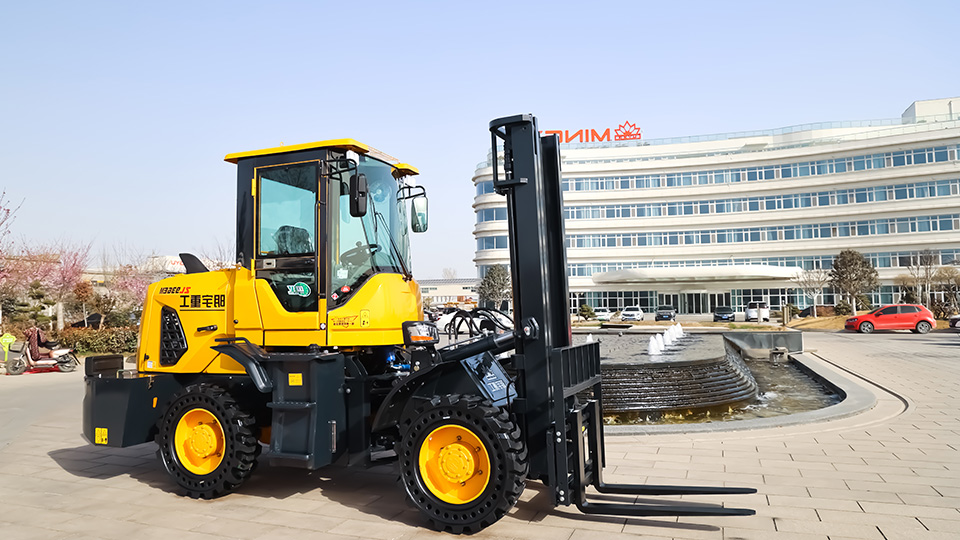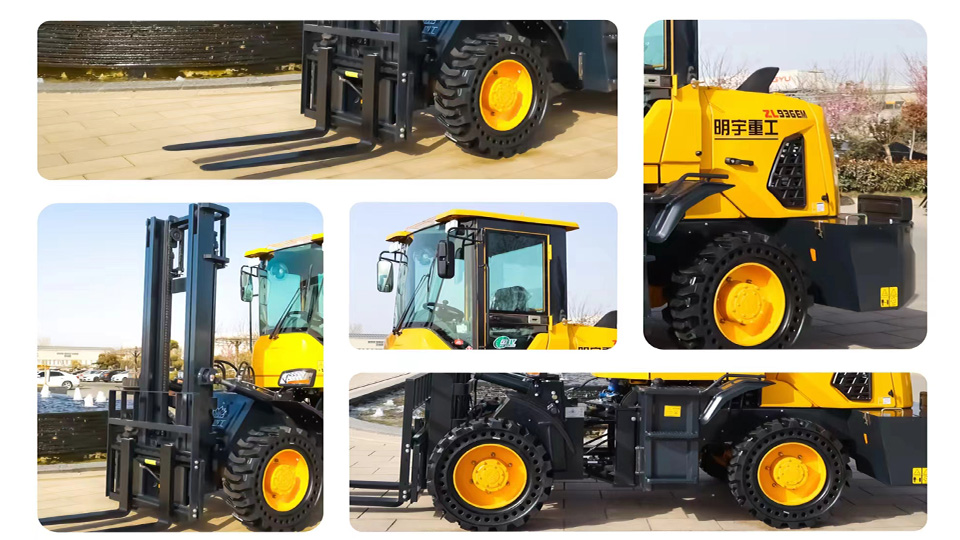
Introduction
Hook: Start with the challenges of material handling on uneven or unpaved surfaces.
Problem Statement: Explain why standard industrial forklifts are unsuitable for such environments.
Introduction of Rough Terrain Forklifts (RTFLs): Briefly describe their purpose and critical role.
Thesis Statement: The primary focus of the article will be to clarify the classification of rough terrain forklifts according to industry standards, primarily OSHA and ANSI, and delve into the technical characteristics that define them.
I. Understanding Forklift Classifications A. Overview of OSHA Forklift Classes (OSHA 29 CFR 1910.178):
Briefly list and describe Classes I through VII.
Emphasize that these classifications are based on fuel type, application, and operator position.
Provide a table or bulleted list summarizing each class.
Crucial Point: Highlight that rough terrain forklifts do not fit neatly into the standard industrial classes I-VI.
B. Introduction to Class VII (Rough Terrain Forklifts):
Explain why Class VII was created as a distinct category.
Define Class VII as encompassing "rough terrain forklift trucks."
Mention the key distinguishing features that separate them from other classes (e.g., pneumatic tires, higher ground clearance, different steering mechanisms).
II. Technical Characteristics Defining a Rough Terrain Forklift
A. Tire Type and Configuration:
Pneumatic Tires: Explain the necessity of large, aggressive pneumatic tires for traction and shock absorption on uneven surfaces.
Tread Patterns: Discuss various tread designs (e.g., lug, flotation) and their applications.
Four-Wheel Drive (4WD) vs. Two-Wheel Drive (2WD): Elaborate on the benefits of 4WD for superior traction and stability in challenging conditions. Mention specialized configurations like crab steering.
B. Suspension and Ground Clearance:
High Ground Clearance: Explain how this prevents damage from obstacles and allows navigation over uneven terrain.

Suspension Systems: Discuss heavy-duty axles and suspension components designed to absorb significant shocks and vibrations.
C. Chassis and Frame Design:
Robust Construction: Emphasize the need for a durable, heavy-duty frame to withstand torsional stresses and impacts.
Weight Distribution: Discuss how the design ensures stability, especially when lifting heavy loads on inclines.
D. Engine and Drivetrain:
Powerful Engines: Explain the requirement for high torque output to move heavy loads over difficult terrain. Discuss common engine types (diesel being prevalent).
Hydrostatic vs. Torque Converter Transmissions: Compare and contrast these, highlighting their suitability for rough terrain applications (e.g., precise control of hydrostatic).
E. Mast and Carriage:
Heavy-Duty Masts: Describe the reinforced mast designs capable of handling dynamic loads.
Side Shift and Fork Positioners: Discuss common attachments that enhance versatility.
F. Operator Enclosure and Ergonomics:
ROPS/FOPS (Roll-Over Protective Structures/Falling Object Protective Structures): Essential safety features.
Comfort and Visibility: Discuss the importance of a comfortable operator station for long shifts and good visibility for safety.
III. Sub-Types and Specialized Rough Terrain Forklifts
A. Vertical Mast Rough Terrain Forklifts:
Standard configuration, similar in appearance to industrial forklifts but built for rough terrain.
Discuss typical lift capacities and applications.
B. Telescopic Handlers (Telehandlers):
Explain their distinct telescopic boom design.
Discuss their versatility (lifting, reaching, acting as a crane, aerial work platform).
Clarify that while often considered rough terrain machines, their primary classification might differ slightly due to their multi-functionality (often covered under specific ANSI standards for telehandlers, ANSI B56.6 or B56.10).
Key Distinction: While Class VII often encompasses telehandlers, it's crucial to note their specific design and the broader range of tasks they perform.
C. Other Specialized RTFLs: Briefly mention compact RTFLs, heavy-duty RTFLs, and those with specific attachments for niche applications (e.g., pipe handlers).
IV. Regulatory Standards and Safety Considerations
A. OSHA 29 CFR 1910.178 (Powered Industrial Trucks):
Reiterate its applicability to Class VII.
Focus on general safety requirements (training, maintenance, operation).
B. ANSI/ITSDF B56.6 (Safety Standard for Rough Terrain Forklift Trucks):
Emphasize the specific standard governing the design, construction, operation, and maintenance of RTFLs.
Discuss key provisions related to stability, load ratings, and testing.

C. Operator Training and Certification:
Stress the critical importance of specialized training for rough terrain environments, beyond standard forklift training.
Discuss topics like load charts, center of gravity on inclines, soft ground operations, and attachment handling.
D. Site-Specific Safety Plans:
Importance of assessing terrain, weather conditions, and potential hazards.
Role of spotters and clear communication.
V. Applications and Industries
Construction: Primary industry, handling materials on job sites.
Agriculture: Moving bales, feed, equipment in fields and farms.
Forestry: Log handling, timber operations.
Mining: Material handling in rugged conditions.
Oil and Gas: Supporting operations in remote or undeveloped areas.
Military: Logistics and support in diverse environments.
Event Management: Setting up large outdoor events.
Conclusion
Recap: Summarize the main points – RTFLs as Class VII, their unique technical features, and the importance of specific standards.
Reinforce: The critical role RTFLs play in industries requiring robust material handling solutions on challenging terrain.
Final Thought: Emphasize the need for proper selection, operation, and maintenance to ensure safety and efficiency.
Key Technical Details to Elaborate On:
Stability Triangle/Pyramid (adapted for RTFLs): Explain how the center of gravity shifts on inclines and uneven ground.
Load Charts: Detailed explanation of how to read and interpret load charts for different boom angles, extensions, and outrigger configurations (especially for telehandlers).
Hydraulic Systems: Discuss the heavy-duty hydraulic pumps, valves, and cylinders required for lifting and manipulating heavy loads in dynamic conditions.
Braking Systems: Describe robust braking systems designed for rough terrain, including wet disc brakes or multi-disc brakes.
Articulation/Oscillation: Explain how some RTFL designs allow axles to oscillate independently for better ground contact.
Outriggers/Stabilizers: Essential for telehandlers and some vertical mast RTFLs when lifting heavy loads or at maximum reach.
Environmental Considerations: Discuss features like enclosed cabs for weather protection, advanced filtration systems for dusty environments.
Name: selena
Mobile:+86-13176910558
Tel:+86-0535-2090977
Whatsapp:8613181602336
Email:vip@mingyuforklift.com
Add:Xiaqiu Town, Laizhou, Yantai City, Shandong Province, China